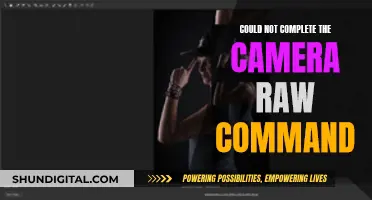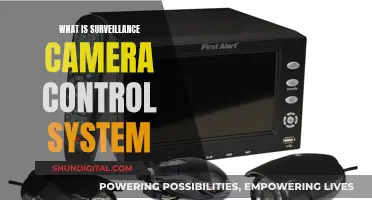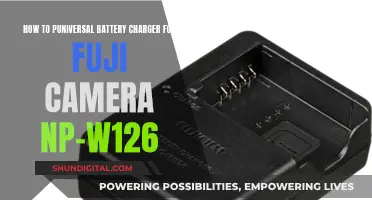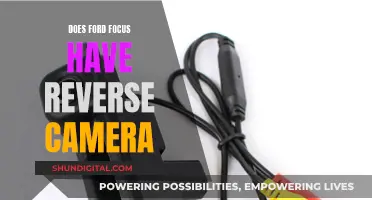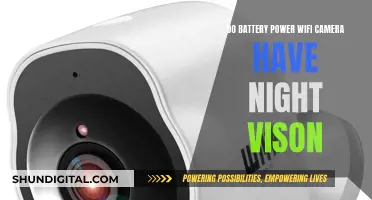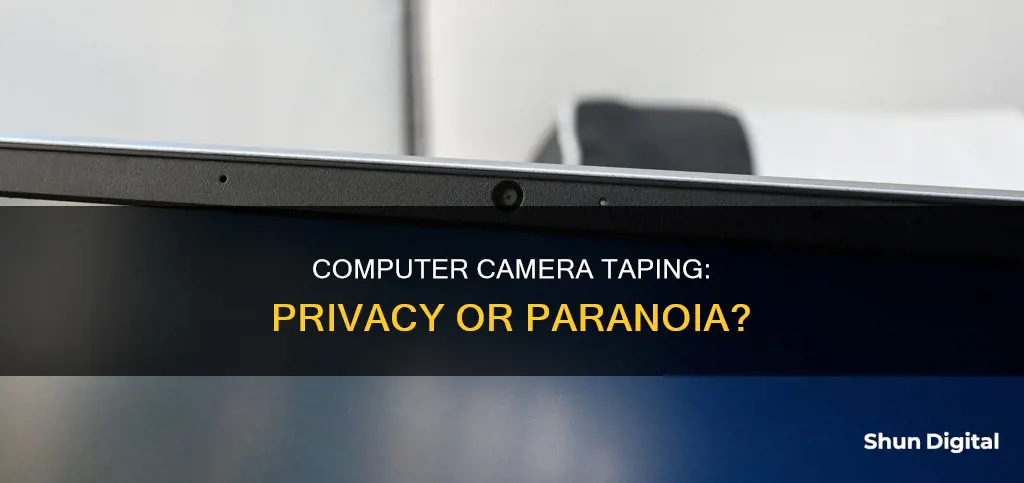
Webcam hacking is a real threat, and many people choose to protect themselves by taping over their computer cameras. While it may seem like an overreaction, it is a simple and effective method to safeguard your privacy. The practice gained attention when a photo of Facebook CEO Mark Zuckerberg's personal laptop revealed that he, too, tapes over his camera and microphone. Taping over the camera prevents hackers from seeing through the lens, even if they gain access to the computer. This is especially relevant given that many people keep their laptops in private spaces, such as bedrooms. Additionally, taping over the microphone can muffle the audio, hindering a hacker's ability to listen in. While malware and other security breaches are the primary tools used by hackers, physical barriers like tape provide an extra layer of protection.
| Characteristics | Values |
|---|---|
| Preventative measure against hacking | Tape prevents hackers from seeing what the camera sees |
| Privacy protection | Tape stops hackers from taking shots of your face |
| Easy and cheap | Tape is an easy and cheap method to protect your privacy |
| Type of tape | Opaque tape that blocks light, is easily removable, and doesn't leave residue |
| Other methods | Webcam covers, Post-it notes, stickers, phone cameras |
What You'll Learn

Webcam hacking is easy
Many people choose to tape over their computer cameras because webcam hacking is worryingly easy. A hacker can gain access to your webcam by sending you a malicious file or link via email or instant messenger. These files are often disguised as legitimate software or programs, and once downloaded, they can give hackers full remote access to your computer.
One such malicious file is called a Trojan horse, or Trojan for short. This type of malware is often disguised as legitimate software or a program. Once installed, it can give hackers access to your computer files, steal your data, or insert more harmful malware onto your device. It also gives them remote access to your peripherals, including your webcam. This means they can watch you through your camera without your knowledge. In most cases, a red or green light appears when our webcam is turned on, but some Trojans allow hackers to bypass this function.
Another method of hacking webcams is through a technique called "phishing." This involves sending email messages that claim to offer information or entertainment to readers. The emails contain links or attached files that, when clicked, download malware onto the recipient's device. This malware can give the hacker complete, unrestricted control of the device, including the webcam.
It's important to note that hacking into someone's webcam usually requires motivation, as the attack is typically planned and deliberate. Hackers may want to capture images or videos of the victim in a compromising position to use for blackmail or financial gain.
While it's challenging to prevent all camfecting attacks, there are ways to strengthen your defence. Firstly, check which apps and programs have permission to access your camera and microphone, and only allow access to those that are necessary. Secondly, turn on your firewall to protect your network by filtering and blocking unauthorised access attempts. Finally, install antivirus software programs to actively filter and check for malicious malware on your device.
Sunlight and Camera Focus: Impact and Adjustments
You may want to see also

Hackers can use photos for extortion
People tape their computer cameras to protect their privacy and prevent webcam hacking. Webcam hacking is a common practice, where hackers gain access to your device through malware, such as a Trojan horse, which is often unintentionally downloaded through a link in an email or while surfing the internet. This malware not only grants access to your camera but also your private files and browsing history. The information obtained, including photos and videos, can be used for malicious purposes, including blackmail and extortion.
The rise of "sextortion" is a growing phenomenon where hackers use sexual images or videos of their victims as a form of currency for blackmail. This type of extortion has been facilitated by the increasing use of private photo streaming services and the sharing of intimate content online. Hackers can gain access to these photos in several ways, including password compromise, targeted attacks using emails or files, and public hotspot compromises.
Once hackers obtain compromising photos or videos, they can demand more intimate content from their victims, threatening to expose the images to their family, friends, or online if they do not comply. This form of extortion has devastating and long-lasting consequences for victims, who often suffer psychological harm and live in constant fear of their images resurfacing. Unfortunately, due to the lack of specific extortion laws in some places, many perpetrators go unpunished, leaving victims feeling powerless.
To protect yourself from webcam hacking and photo extortion, it is recommended to cover your webcam with tape or a sliding cover, improve your device's security with antivirus software and security updates, and practise safe password habits, such as using unique passwords for each account.
Watching Swann Camera Footage on Your Computer
You may want to see also

Tape is a cheap and effective solution
Taping over your computer camera may seem like an overreaction, but it is a cheap and effective solution to protect your privacy. Webcam hacking is a real threat, and it is relatively simple for a hacker to gain control of your webcam. This can be done by tricking you into downloading malware, often a Trojan horse, which gives them access to your camera and private files. This can then be used for malicious purposes such as blackmail or selling your information on the dark web.
Covering your camera with tape is an easy and affordable way to prevent this from happening. Tape is readily available and can be purchased in most stores. It is also easy to apply and remove, so you can uncover your camera when needed for online conferences or video calls. While there are other ways to protect your privacy, such as installing antivirus software or using a VPN, tape is a simple and effective solution that anyone can implement.
There are a variety of tapes that can be used for this purpose, such as duct tape, Washi tape, painter's tape, or even a sticky note. It is important to choose a tape that is opaque enough to block light and does not leave a sticky residue on the camera lens. Some people also choose to put something between the tape and the lens, such as a piece of cardboard or cotton, to further protect the camera.
By using tape to cover your computer camera, you can take control of your privacy and prevent potential hacking attempts. It is a small action that can make a big difference in protecting your personal information and online security.
Shipping Cameras: Safe Lithium Battery Handling
You may want to see also

Tape is easily removable
People cover their laptop cameras with tape to protect their privacy. Webcam hacking is worryingly simple and can lead to malicious activity, such as blackmail, identity theft, and scams.
When it comes to choosing a tape to cover your webcam, it's important to select one that is easily removable. You don't want the tape to be a permanent fixture on your device, after all. Some types of tape, like duct tape, have strong adhesives that can be difficult to remove and may leave behind a sticky residue. This residue can potentially foul up the image captured by your webcam or even damage the camera lens if you try to remove it.
- Custom-built webcam stickers: These stickers are designed specifically for webcams and can be reapplied multiple times before losing their stickiness. They are aesthetically pleasing and won't leave any adhesive residue behind.
- Post-It notes: Post-It notes are easily accessible and come in various colours. They are thick enough to cover webcams effectively and can be draped over the camera lens or cut to size. While some varieties may leave residue, there are specific Post-It note tapes that are designed to be easily removable.
- Washi tape: Washi tape is made from natural fibre and is known for its opacity and attractive designs. It is more expensive than regular tape but won't leave adhesive residue on your webcam.
- Painter's tape: Painter's tape is thicker than standard Scotch tape and is less likely to leave residue if not left on the surface for an extended period.
- Removable tape with Post-It adhesive technology: Scotch and Amazon offer removable tapes that utilise Post-It adhesive technology. These tapes are designed to stick securely but can also be easily removed and repositioned without tearing or leaving residue. They are ideal for temporary applications and can be written on with various writing instruments.
Remember, while taping your webcam is a good first step, it's also important to improve your computer's defences by installing antivirus software, applying security updates, and being cautious about clicking unknown links.
How External Webcam Cameras Enhance Your Computer Experience
You may want to see also

Tape can block the camera light
Many people choose to cover their computer cameras with tape to protect their privacy. Webcam hacking is worryingly simple and can occur when a user unintentionally download malware. This can give a hacker access to your camera, files, and browsing history.
The indicator light on a webcam shows when it is active. Malware can tamper with this light, switching it off when the camera is in use, or turning it on when it is not. This means that the light cannot always be trusted as a signal that the camera is in use.
Taping over the camera is an effective way to protect your privacy and prevent hackers from taking shots of your face. The tape should be opaque enough to block light and easily removable. It should also not leave a sticky residue on the camera when removed.
Some good options for tape to cover your webcam include:
- Custom-built stickers for webcams, which can be reapplied many times and are designed not to leave residue.
- Washi tape, which is made of natural fiber, is opaque, and comes in different designs.
- Painter's tape, which is thicker than regular tape and less likely to leave residue.
- Post-it notes, which are thick enough to cover the camera and easy to peel off.
- Blackout tape, which is designed to block light.
Tempered Glass Camera Lenses: What's the Deal?
You may want to see also
Frequently asked questions
Covering a computer's camera prevents a hacker from seeing what the camera sees. It is a good step to protect your privacy and prevent any hacker's plans of taking shots of your face.
People use a variety of items to cover their computer camera, including tape, post-it notes, folded business cards, stickers, and even peanut butter. It is recommended to use opaque tape that is easily removable and does not leave a sticky residue.
Webcam hacking is a real threat, and hackers can gain access to your computer through dodgy email links or by installing malware. They can then use the camera to spy on you, record footage, or take photos, which could be used for malicious purposes such as blackmail.


